Python virtual env
Intro
I’m getting started with Pyton and little bit confused with venv so I want to write black on white what I understood so far. I use Windows 10 22H2 but the process should be similar on other Windows versions or OSes. I suppose Python 3 is installed, up and working.
In a terminal
mkdir my_projectcd ./my_project- Type “cd my” then strike TAB
py -m venv .\PrjVEnv- This may take few seconds
- This creates, among other things, a subdirectory named
./PrjVEnv - Most of the time you will see :
py -m venv .venv
-
ls
Just to check that the./PrjVEnvsubdirectory has been created code .
Don’t forget the dot
This launches VSCode “in” the current directory
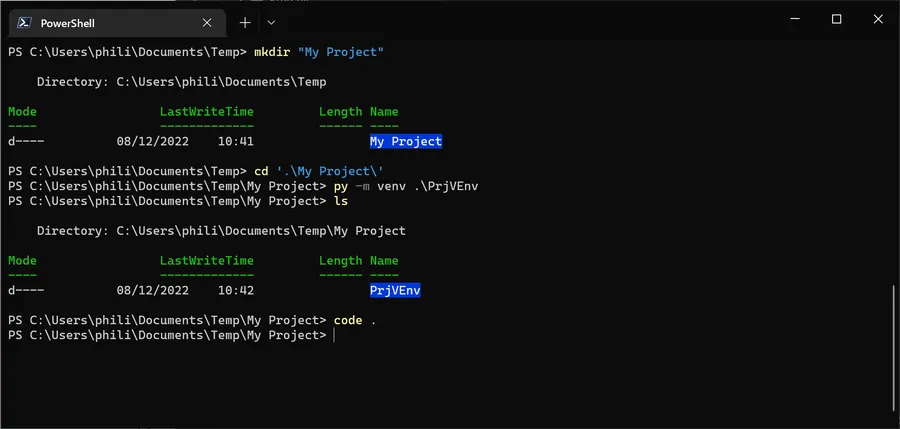
In VSCode
- CTRL + SHIFT + P
- Python: Select Interpreter
- If needed start to type “Python” then the different options should be listed.

Python 3.10.7 ('PrjVEnv':venv)./PrjVEnv/Scripts/python.exe- Or, if you run another Python version pick the one listed with the “(‘PrjVEnv’:venv)”
- This is the interpreter running within the context of the Python Virtual Environment

- CTRL + SHIFT + ù
- To open a new Terminal within VSCode
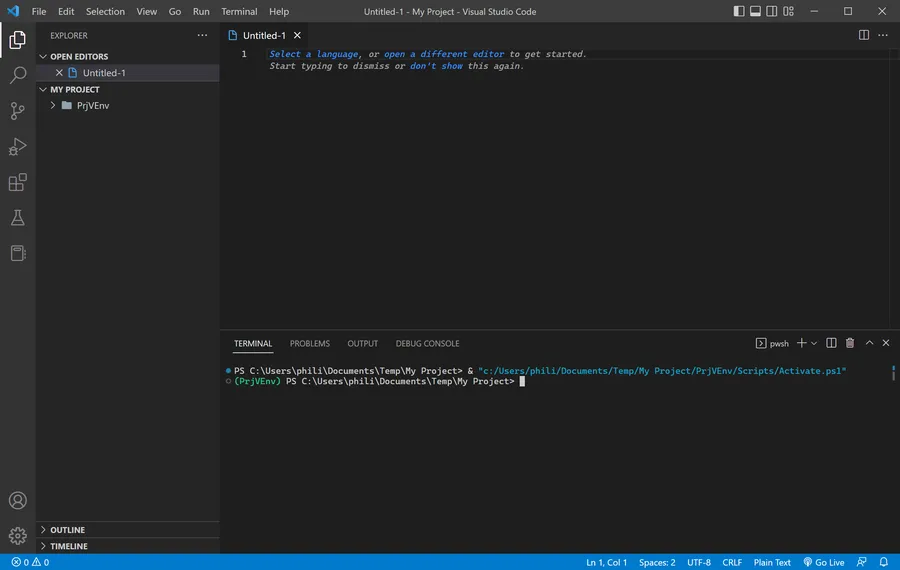
python -m pip install numpy
This installs the lib needed by the project
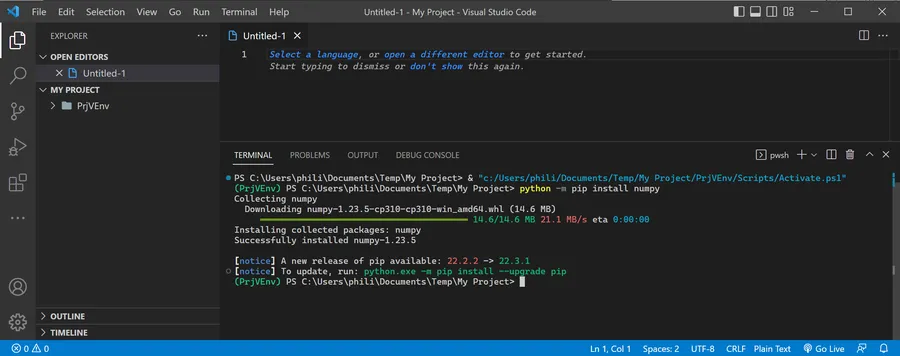
Done!
Just to make sure…
- Enter some code
import numpy as np
def MyFunction():
A = np.array([0, 1, 2, 3])
print(A.shape, A.size)
if __name__ == '__main__':
MyFunction()
-
CTRL + S Save the code
-
Set a breakpoint
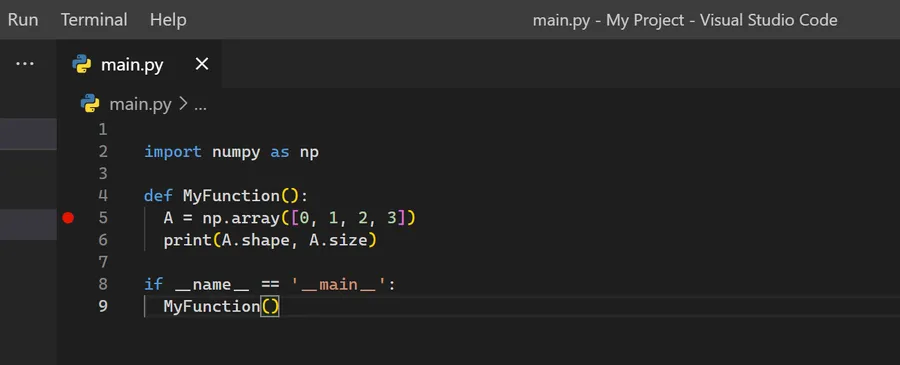
- F5 Select “Debug the currently active Python file”
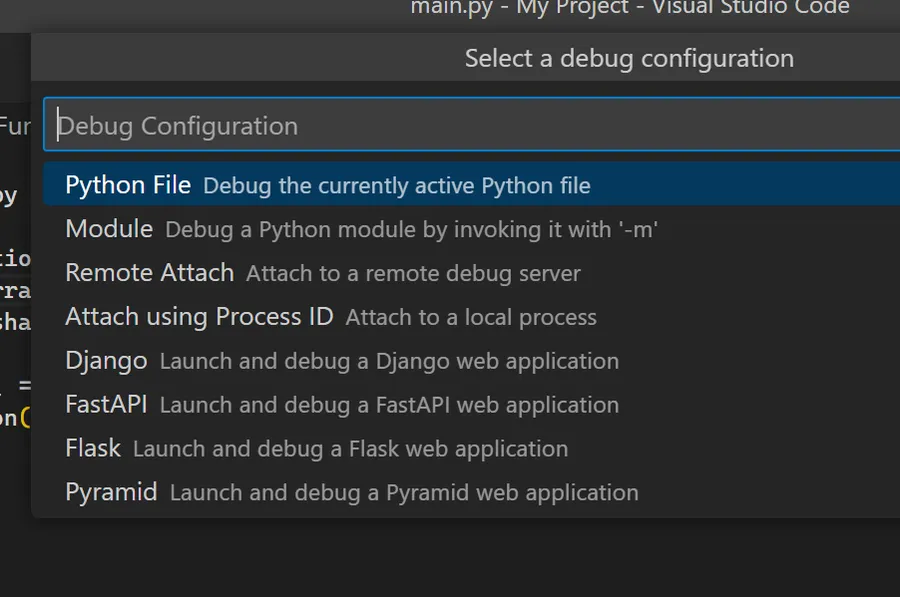
- F10 To step over the breakpoint when you reach it
- Inspect the variables etc.

- F5 To let the code ends
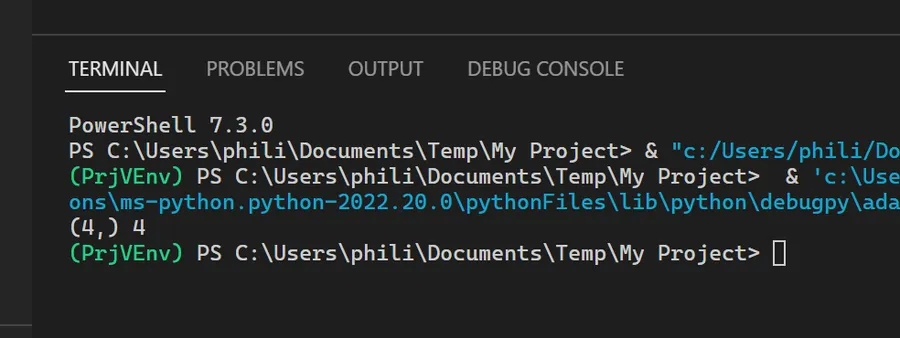
- If additional libs are needed, as before, add them from the VSCODE console
python -m pip install scipyFor example
Voilà, I hope this helps.